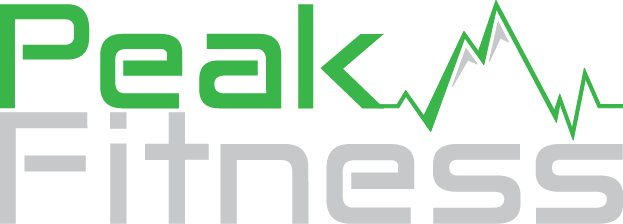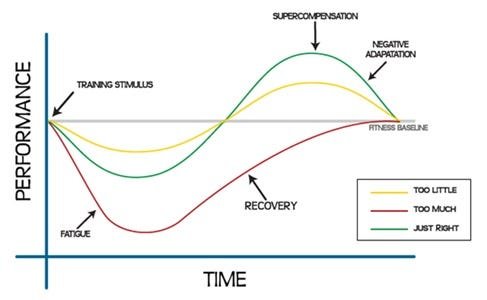5 Best Muscle Building Strategies - #1 Progressive Overload
Strength training plateaus are a common challenge, but with the right strategies, they can be overcome. This guide presents the best choices for breaking through these frustrating stalls in your fitness journey.
1. Embrace Progressive Overload
What Is It?: Gradually increasing the stress on your muscles.
Why It's a Top Choice: It's crucial for continuous muscle growth and strength gains.
How to Implement: Alter sets, reps, and weight; modify exercise tempo; introduce new exercises.
2. Prioritize Proper Technique
What Is It?: Ensuring correct form in all exercises.
Why It's Crucial: Reduces injury risk and ensures targeted muscle development.
Best Approach: Work with a coach or trainer. [Insert Image: Trainer assisting a client with form]
3. Focus on Recovery
What Is It?: Incorporating adequate rest and recuperation.
Why It Matters: Muscle repair and strengthening occur during this time.
Top Tips: Prioritize sleep, include active recovery days.
4. Optimize Your Nutrition
What Is It?: Eating a balanced diet to support training.
Why It's Essential: Proper nutrition fuels workouts and aids in recovery.
Best Choices: Balanced intake of proteins, carbs, and fats.
5. Regularly Review Your Progress
What Is It?: Tracking your strength and fitness levels.
Why It's Vital: Helps identify achievements and areas for improvement.
Best Methods: Use fitness apps, keep a training log.
Implementing these strategies is key to breaking through strength training plateaus. They set you up for long-term success in your fitness journey. "Stronger Than Yesterday!" is more than just a catchphrase – it's a commitment to continuous growth and improvement. “Start Your Transformation Today!”
Progressive Overload: The Key to Continuous Muscle Growth and Strength Gains
In the realm of strength training and muscle building, progressive overload is not just a strategy; it's a fundamental principle that drives continuous improvement. Whether you're a beginner or a seasoned athlete, understanding and effectively implementing progressive overload can be the difference between stagnating and reaching new heights in your fitness journey. In this comprehensive guide, we will delve into what progressive overload is, why it is crucial for muscle growth and strength gains, and how to effectively implement it in your training regimen.
Understanding Progressive Overload
What Is Progressive Overload?
Progressive overload involves gradually increasing the stress placed on your muscles during training. This concept is based on the principle that muscles need to be challenged to grow stronger. By consistently increasing the demands on the musculoskeletal system, you encourage your body to adapt by enhancing muscle size, strength, and endurance.
The Science Behind It
The roots of progressive overload lie in our body's natural adaptive abilities. When you subject your muscles to higher levels of stress than they are used to, it triggers a biological response, leading to muscle hypertrophy, or the enlargement of muscle fibers. This process involves the repair and growth of muscle cells to accommodate the increased workload.
Why Progressive Overload is a Top Choice for Strength Training
Continuous Muscle Growth
Without progressive overload, muscles reach a point of comfort and no longer need to grow or strengthen. This method ensures that your muscles are continuously being challenged, leading to ongoing growth.
Preventing Plateaus
A common issue in strength training is hitting plateaus, where you no longer see noticeable improvements. Progressive overload is the key to avoiding these stalls in progress, as it continually changes the stimulus your muscles receive.
Adaptability and Versatility
This principle can be applied regardless of your fitness level or goals. Whether you are training for strength, size, endurance, or even weight loss, progressive overload can be tailored to meet your specific needs.
Implementing Progressive Overload in Your Training
Altering Sets and Reps
How to Do It: You can increase the number of sets or reps for a given exercise. For instance, if you're comfortably doing three sets of ten reps, consider increasing to four sets.
Balancing Act: It's crucial to find a balance. Increasing too rapidly can lead to overtraining, while too slow an increase might not challenge your muscles enough.
Increasing the Weight
Gradual Increases: The most common method of progressive overload is to increase the weight lifted. A good rule of thumb is to increase the weight when you can perform your target number of reps with relative ease.
Safety First: Always prioritize form over the amount of weight. Lifting heavier weights should not compromise your technique.
Modifying Exercise Tempo
Time Under Tension: Slowing down your repetitions increases the time your muscles are under tension. This can be a powerful way to induce muscle growth, especially when you're unable to increase weight due to limitations or injury.
Examples: Try taking four seconds to lower the weight and two seconds to lift it, instead of a quicker pace.
Introducing New Exercises
Variety Is Key: Introducing new exercises into your routine can challenge your muscles in different ways, engaging different muscle fibers and promoting overall muscle development.
Stay Fresh: Regularly changing your workout routine not only helps with muscle growth but also keeps you mentally engaged and less likely to get bored.
Conclusion
Embracing progressive overload is a journey that requires patience, persistence, and a thoughtful approach to your training. By continually challenging your muscles, you set the stage for consistent growth and improvements in strength. Remember, the key to successful implementation is balance and listening to your body. It's about making incremental changes that are sustainable and effective, leading to long-term success in your fitness journey.






